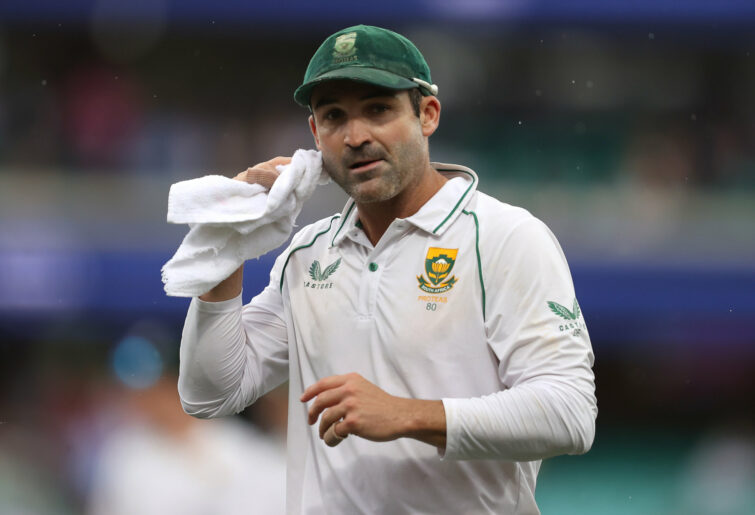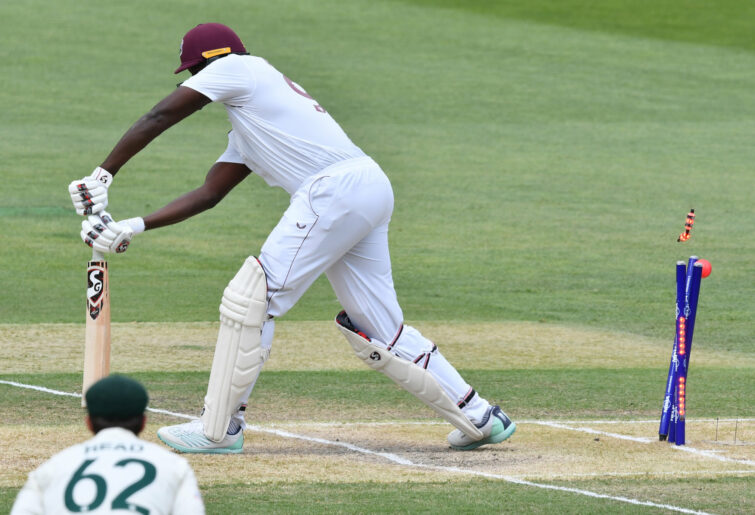Australia battle through slow start, rain delay to clinch ODI series
Australia have sealed victory in the best-of-three one-day international series against South Africa, avenging their upset loss in match two with a rain-affected 110-run…
The imminent death of Test cricket has been discussed for decades. From the inception of Kerry Packer’s World Series Cricket in 1977 to Andrew Symonds’ million-dollar bid in the inaugural IPL auction in 2008 to the hypothetical future of only three nations playing Test cricket, there has long been fear for the purest form of the sport and its ability to survive amidst a growing world of more marketable short-format cricket.
Nearly two decades on from the first international T20 match, there are still signs that Test cricket is alive and well. Just last week, a written-off Pakistan had Australia reeling at 4/16 on Day 3 at the MCG and later threatened to chase down a target of 317 before an absence of tail-end runs saw them fall 80 runs short.
Meanwhile, a near-retired Dean Elgar scored a crafty 185 and an exciting prospect scored a confident 56 on his international debut as South Africa thrashed the powerhouse of India by an innings.

Dean Elgar of South Africa. (Photo by Mark Kolbe/Getty Images)
But more so than an oversaturation of white ball cricket, the fear for the future of Tests largely sprouts from an apparent dominance of three nations, namely Australia, England and India, who are supposedly only challenged when playing against each other. But the idea of this ‘big three’ being a league above is greatly exaggerated, especially as the task of winning away from home remains a difficult task.
As recently as 2022, Australia went down by an innings in Sri Lanka, denying them a seemingly easy series win. Earlier in the same year, an inspired Kyle Mayers tore through England to hand them an embarrassing series defeat. As it stands, India is still yet to win a Test series in South Africa.
And yes, other nations do struggle to beat the ‘big three’ at home, but it’s fair to say that they’re not thrashing other teams in their backyards for fun.
As of right now, the divide in competition is not an ultimate threat to Test cricket. And while the frequent occurrence of World Cups, particularly in the T20 format, does cram the international cricket calendar with sudden rushes of bilateral white-ball series leading into tournaments, all-format players who struggle to balance a packed schedule still tend to prioritise the longest format, some of whom make minimal white ball appearances outside of ICC events.
But posing a bigger threat than bilateral white ball series is an oversaturation of franchise tournaments. The IPL occupies a two-month window where any international cricket is overshadowed to the point of near redundancy. And last year saw the launch of three new T20 tournaments, each featuring teams owned by IPL franchises: South Africa’s SA20, the UAE’s ILT20 and the USA’s Major League Cricket. One of these leagues is already proving a threat to Test cricket.
Presenting the Top 5⃣ buys of #IPLAuction 2024 ????
— IndianPremierLeague (@IPL) December 19, 2023
Mitchell Starc tops the list with a whopping amount of INR 24.75 Crore ????#IPL pic.twitter.com/3ky8QsixV1
The announcement of South Africa’s touring squad for their February Test series against New Zealand was met with disdain, and understandably so.
Simply put, South Africa selected a second-rate squad, featuring seven uncapped players, to allow their key players to feature in the upcoming season of the SA20. The squad is captained by Neil Brand, a player so low profile that he doesn’t have a bio or even a profile picture on ESPNcricinfo.
Although greatly depleted, the squad features some quality players. Uncapped batters Raynard van Tonder and Ruan de Swardt both average mid-40s in first-class cricket. David Bedingham looked right at home in his recent Test debut against India, pulling two magnificent sixes on his way to 56. Pace bowler Duanne Olivier boasts the second-best strike rate in the history of Test cricket.
But whether or not South Africa B can contest the Kiwis is beside the point; Test cricket is no longer the number one priority for their leading players.
The justification behind the makeshift squad comes down to financial benefits. The SA20 pulls in money for Cricket South Africa. The Test series benefits New Zealand Cricket. But nonetheless, CSA looking after their own finances shows utter contempt for New Zealand. Refusing to put forth a full-strength squad at the risk of fewer ticket sales disregards Test cricket being the pinnacle of the sport.
South Africa can argue that they tried to reschedule the Test series and claim to still have a strong regard for the long format. But their position of requesting that New Zealand shuffle their schedule rather than sorting out their own end of the conundrum shows where their priorities lie. It makes for ugly reading if they continue to only put their best foot forward for home series.
And while South Africa’s squad of leftover scraps is the most forthright example of it, signs of Test cricket coming second are showing elsewhere.

Jason Holder. (Photo by Mark Brake – CA/Cricket Australia via Getty Images)
While the West Indies squad for their near upcoming series against Australia isn’t unrecognisable, allrounders Jason Holder and Kyle Mayers have both opted out of the Test leg of the tour, instead opting for brief stints in the T20 franchise circuit.
Test cricket has survived through five decades of One Day Internationals. T20 Internationals have barely made a dent on the format’s relevance.
But if every country wants its own IPL, and is willing to provide underequipped Test teams to fill obligations, then that’s where the format will fail to thrive and ultimately die.